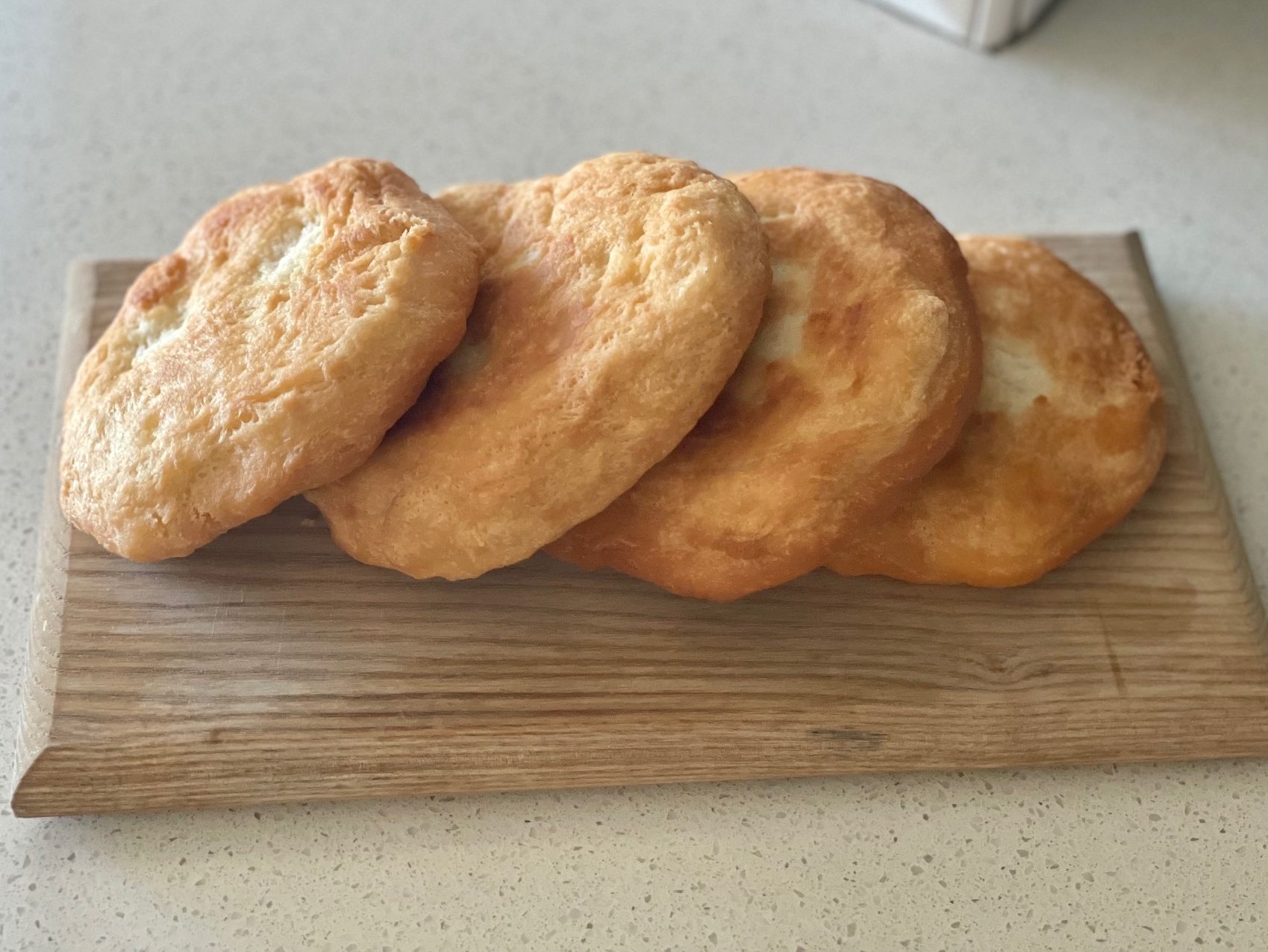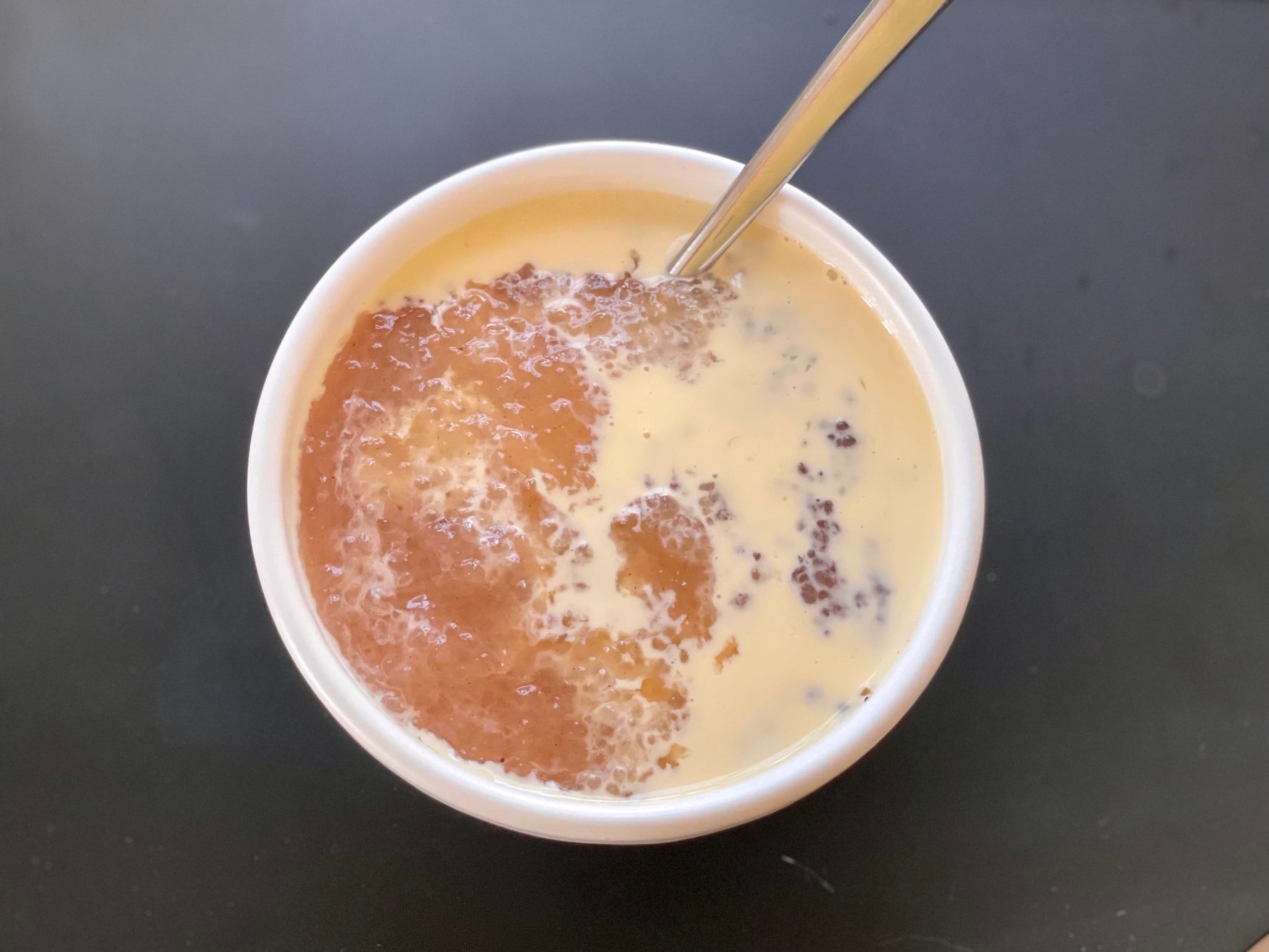Inspired by the U.S. Virgin Islands
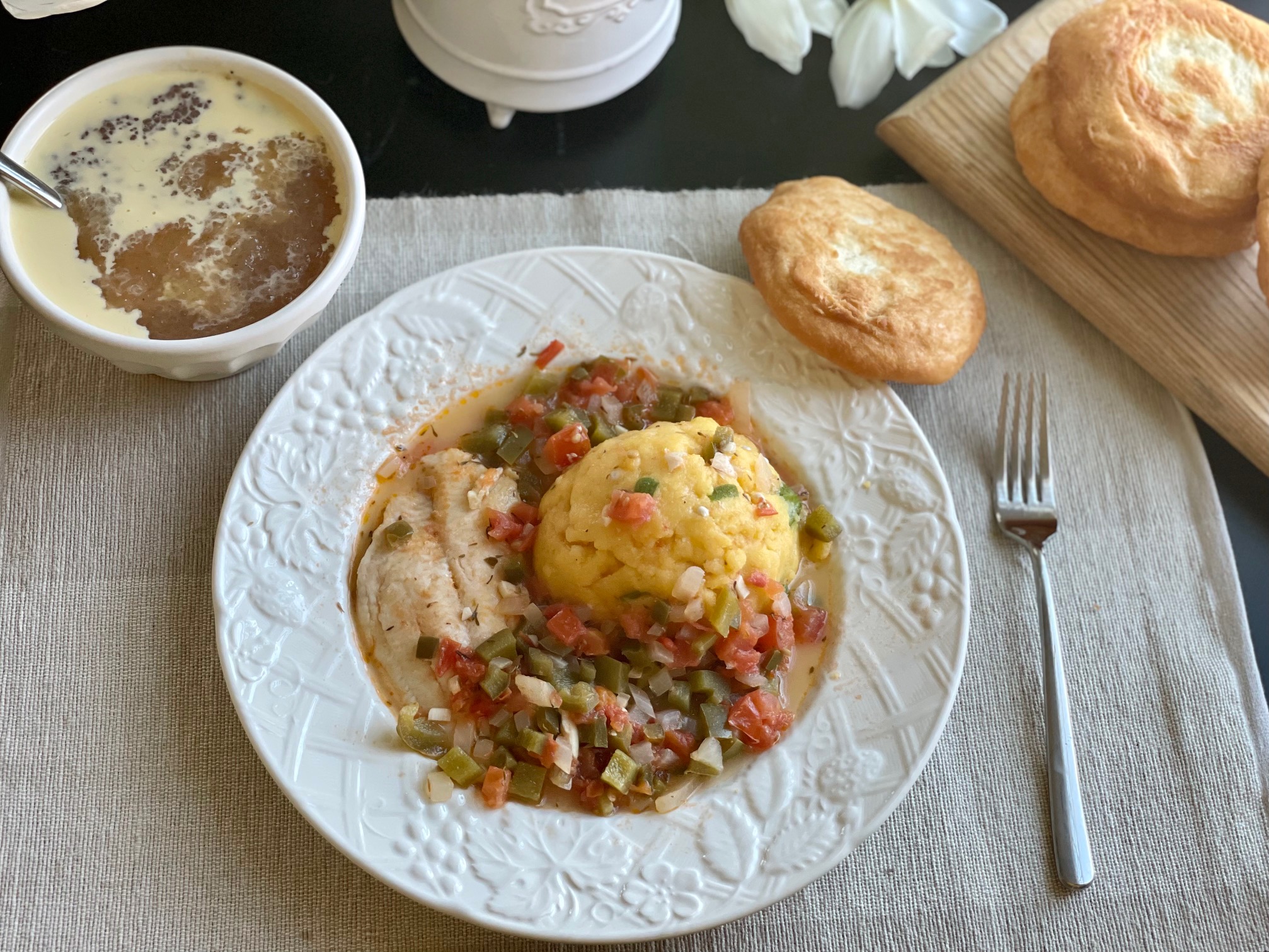
THE MEAL
(Click on the links above to jump to that part of the post!)
Don’t worry, we’ll get back to the continental U.S. soon! I’m personally really enjoying this foray into the U.S. territories, though, and am learning so much about the people and culture of this lesser-known part of our country.
The U.S. Virgin Islands are made up of four tropical islands in the Caribbean: St. Thomas, St. John, St. Croix, and Water Island. The original inhabitants of the islands were the Ciboney, the Caribs, and the Arawaks. European influence arrived with Christopher Columbus in 1493, where he renamed the islands “The Virgins” in reference to the beauty of St. Ursula and her 11,000 virgins.
For a while, the Virgin Islands were left uncolonized by Europeans, but the native settlements were routinely raided and infected by nearby Spanish colonies and voyagers, to the point where the native population completely disappeared by about 1625.
In the 1620s, the island of St. Croix was jointly colonized by England and the Netherlands. They were ousted by the Spanish, who were then defeated by the French, who held claim to the island until 1733.
The island of St. Thomas was settled by the Danish West India Company in the 1650s, and Danish settlements expanded to the island of St. John in the 1690s. They then bought St. Croix from the French in 1733, bringing the three islands together under Danish rule. Denmark held the islands until the U.S. bought them in 1917 for better military positioning during WWI. Like Puerto Rico, the inhabitants of the Virgin Islands are American citizens under the president’s jurisdiction, but they can’t vote in federal elections. The fourth island, Water Island, is in St. Thomas harbor and was held by the Department of the Interior until 1996.
In addition to the four main U.S. Virgin Islands, there are around 50 smaller islands and cays in the 133-square-mile territory. And right next to the U.S. Virgin Islands are the British Virgin Islands, also composed of four large islands and 32 smaller islands. The area looks BEAUTIFUL–definitely want to go there on vacation someday.
With influence from a mix of European cultures and enslaved Africans using Caribbean ingredients, the food of the U.S. Virgin Islands was very different from anything I’ve ever made before. I can’t honestly say that it was my favorite meal, but I did enjoy learning the history and cooking methods of this unique cuisine!
CARIBBEAN-INSPIRED FISH & POLENTA
This dish is inspired by fish and fungi (pronounced “foon-gee”), the unofficial national dish of the U.S. Virgin Islands. This recipe dates back to the days of slavery, when enslaved Africans were only allotted six quarts of cornmeal and six salted herring each week. Occasionally they were able to secretly grow or forage other vegetables like okra, but fish and cornmeal were the main staples.
Nowadays, the fish of choice seems to be saltfish, red snapper, or tilapia. The fish is fried or boiled in a sauce of diced veggies, usually consisting of tomatoes, peppers, and onion.
I tried to find as authentic of a recipe as I could find, but ended up using leftover catfish instead of buying snapper or tilapia. It still turned out pretty good! I’ve never been a huge fan of polenta, but paired with fish and veggies, it was a nice meal and very filling! The only reason I say this wasn’t my favorite is because I’m not the biggest fan of cooked tomatoes, and I didn’t really like them with fish. But that’s just me! I haven’t had a ton of experience making or eating fish in different ways, so I’m glad I at least tried it!
JOHNNY CAKES
These are meant to represent the U.S. Virgin Islands’ “johnny cakes,” but they’re made different than the johnny cakes known on the continent, and fry bread is found in such a variety of different cultures.
Fry bread is a common food throughout the Americas. Every region seems to have their own methods and additions, but this recipe was made with a very basic dough made up of flour, baking soda, sugar, butter, and water. I essentially pan-fried them, but they’re also commonly deep-fried, and can be made with buttermilk or coconut milk or cornmeal or stuffed with cheese and meat. It’s up to you!
I’m still trying to figure out how to knead bread to the right consistency for things like tortillas and fry bread. I thought that I had kneaded this dough enough, but when it came time to shape and fry, they were still kind of dense. They tasted amazing, though, thankfully! You can’t really go wrong with fried dough. 😉
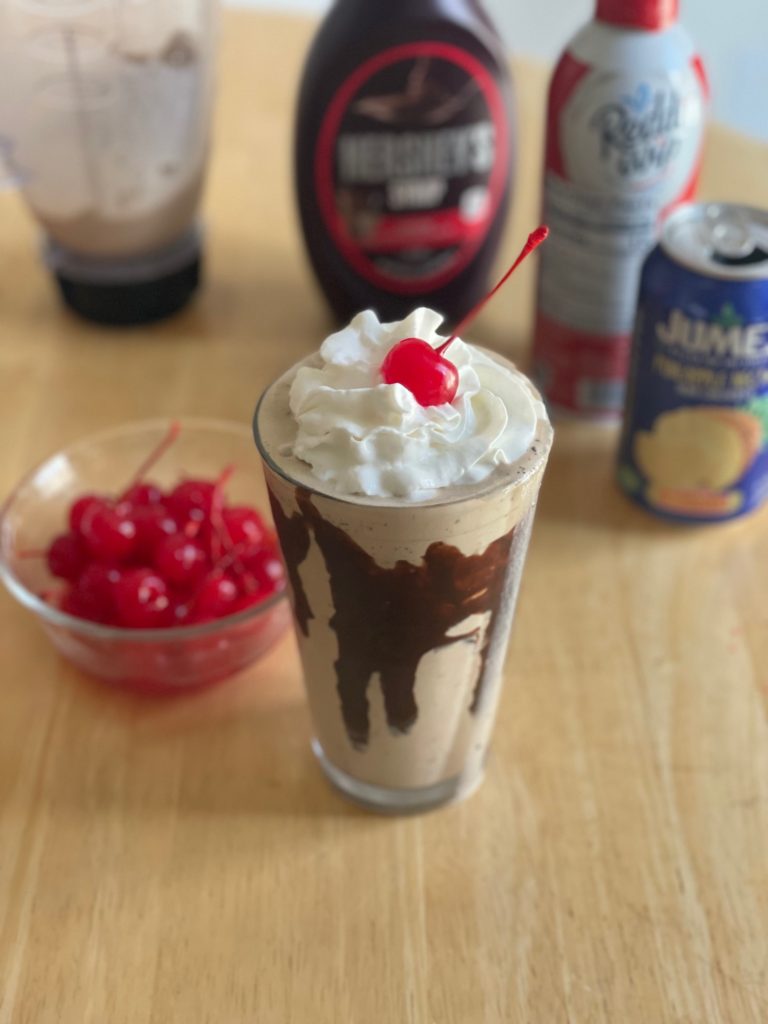
TROPICAL CHOCOLATE MILKSHAKE
My beverage for the U.S. Virgin Islands meal was inspired by a drink called the “bushwhacker.” Some joke that a virgin bushwhacker is just ice, because all the ingredients are a liqueur of some kind. But the flavors of a bushwhacker are essentially chocolate, coffee, coconut, and rum, which can be substituted with pineapple juice. It’s basically a chocolate pina colada! So I got a little creative and made myself a milkshake using mocha-flavored ice cream, pineapple juice, and cream of coconut. The coffee and chocolate were the strongest flavors, but the pineapple and coconut paired surprisingly well!
It was delicious, of course, and was a great backup dessert in case my pudding didn’t turn out. (Thankfully it did!) It’s funny how part of me balked at the idea of doing a milkshake in addition to dessert, but honestly my fruit-juice-based drinks are probably just as sugary as this was!
GUAVA TAPIOCA PUDDING
In Denmark, a popular dessert is a berry-based pudding called rodgrod med flode (“red porridge with cream”). Since Denmark owned St. Thomas and St. John for centuries, their favorite dessert was adapted to use Caribbean ingredients, specifically guava. In the U.S. Virgin Islands, it’s often called “Red Grout” or “Red Groff,” and it’s traditionally served on March 31st, a holiday known as Transfer Day. It’s a holiday to commemorate the day that the islands transferred from Denmark to the United States, and part of the festivities involves lowering the Danish flag and raising the stars and stripes.
Since I didn’t have any fresh guava on hand, I used guava nectar. I found a few recipes online using guava nectar, and those recipes all had photos where the pudding was red, or at least pink. However, the only guava nectar I could find was yellow… I guess maybe I could’ve added red food coloring, but I ultimately decided not to.
This pudding was unlike anything I’d ever eaten before, and it surprised me how good it was! It’s kind of hard to describe. It was like eating spiced applesauce, but with tapioca texture and sweet guava flavor. My sister and I really weren’t sure if we would like it, but we ended up devouring the whole bowl! The vanilla cream was a nice touch, but not essential. I can see why this dessert is so loved in the Virgin Islands!
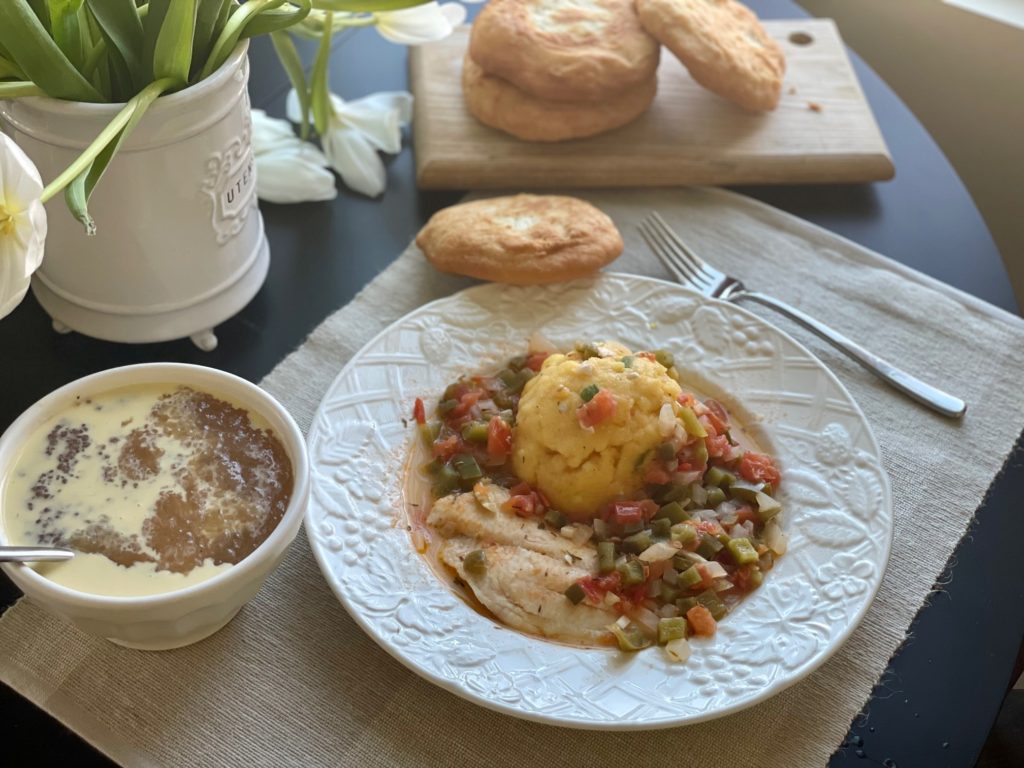
CONCLUSION
Aside from the fry bread, nothing in this meal was like anything I’d ever made before! It was an awesome cooking experience from a part of the United States I knew nothing about before this. Thank you for the inspiration, U.S. Virgin Islands!
How do you think I did? Let me know in the comments if you have any suggestions for improvement, and be sure to tune in next time for my take on a meal inspired by Georgia! If that’s where you’re from, what do you think I should make to represent your state? Bonus points if you have reliable recipes or pro tips before I make the attempt! Thank you for reading!


